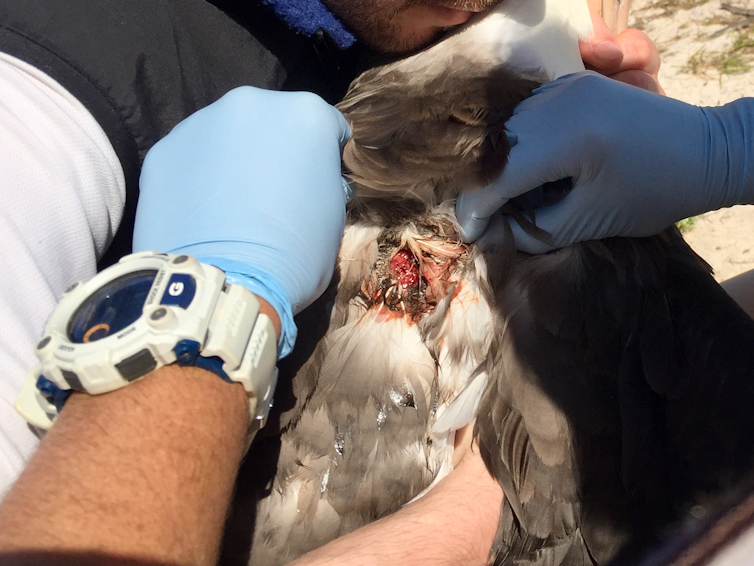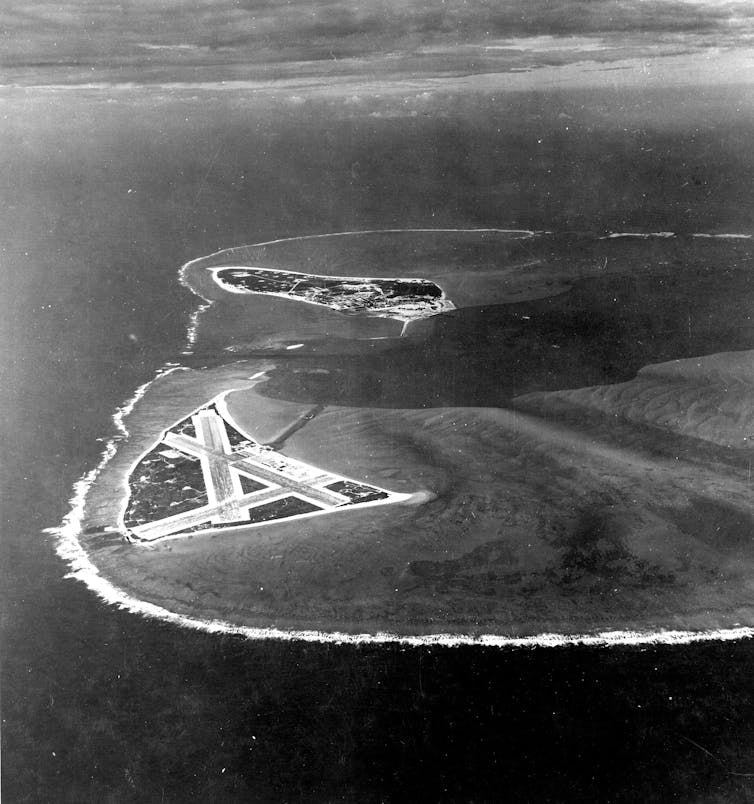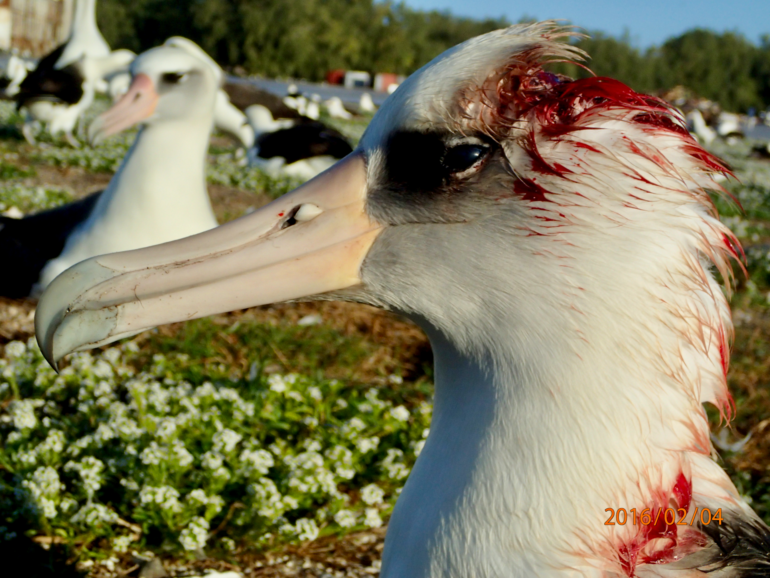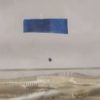At the far end of the Northwestern Hawaiian Islands lies Kuaihelani – also known as Midway Atoll – a small set of islands home to the world’s largest albatross colony. Over a million albatrosses return to Kuaihelani each year to breed. These seemingly pristine islands appear safe, but there’s a predator lurking among the seabirds.
House mice (Mus musculus) — the same kind that may be in your residence — have started to attack and kill albatrosses, eating them alive as they sit on their nests. I’m an ecologist who’s been studying the mystery behind these murderous mice.
A predator hiding in plain sight
Once the site of intense warfare during World War II, Kuaihelani is now a national wildlife refuge.
Without predators such as cats, rats or mongooses, Kuaihelani provides a safe haven for millions of nesting and migratory birds, including mōlī (Phoebastria immutabilis), also known as Laysan albatrosses. These seabirds, each about the size of a goose, nest in nearly the exact same spot each year, producing only one egg annually.

Biologists examine wounds on an adult mōlī caused by invasive house mice.
USFWS – Pacific Region/Flickr, CC BY-NC
In the winter nesting season of 2015, bird-counting volunteers and biologists began seeing gruesome bloody wounds on nesting mōlī. At first, they found only a few mōlī with these mysterious injuries, which included severe chewing along the neck and even scalping. In the weeks that followed, they found dozens of injured mōlī, then hundreds.
Biologists were stumped. Had a black rat escaped off a docked boat? Had a peregrine falcon blown in with the latest winter storm? Desperate to identify the culprit, biologists set up game cameras around nesting mōlī.
Time-lapse night vision footage shows a mouse attacking the head and body of a nesting mōlī.
The cameras captured bizarre nighttime footage of mice crawling and chewing on the backs and heads of mōlī. It was the first time a house mouse had ever been observed attacking a live adult, nesting albatross.
Mōlī, like many seabirds, have evolved without predators on remote islands. As a result, such seabirds are often oddly unafraid and curious – pulling on researchers’ shoelaces or nibbling at our clipboards. This phenomenon is called “island naïveté” and, however charming, can spell disaster when nonnative predators such as rats and cats are introduced to islands. Lacking innate caution, even the largest seabirds can become the defenseless prey of predators as small as a mouse.

The World War II military base on Midway Atoll including an airfield on Eastern Island and more facilities on Sand Island, across the channel.
U.S. Navy/Wikimedia Commons
Developing a taste for flesh
During World War II, the islands of Kuaihelani were cleared and covered with wartime…



